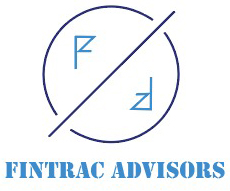How to Undertake Physical Verification of Fixed Assets

Jagrit Tenani
CA Jagrit Tenani has emerged as a seasoned professional in the domains of Risk-Based Audit, SoP Formulation and Implementation, Internal Audit, Statutory Audit, and Goods and Services Tax (GST).
His experience in the Corporate Audit Department of ITC Ltd. encompassed him with a keen awareness of the critical role that stringent internal controls play in ensuring organizational excellence and compliance.
Verification of fixed assets is a crucial procedure for businesses to ensure accurate financial reporting, compliance with legal requirements, and efficient asset management.
Approaches to Fixed Asset Tagging:
- Barcode Tagging:
Barcodes are printed labels with unique numeric or alphanumeric codes that can be scanned using handheld or mobile barcode readers.
Pros: Low cost, simple to use, rapid detection.
Cons: Limited data storage, prone to breakage, and line-of-sight requirements.
- QR Code Tagging:
Pros: Pros: Increased data capacity, compatibility with smartphones, and connectivity to internet-based records.
Cons: Requires line-of-sight; may be too much for simple purposes; sensitive to print quality.
- RFID Tagging:
Pros: Durability, bulk scanning, and no line-of-sight requirement.
Cons: Pricey, complicated technically, and privacy issues.
- GPS Tagging:
Pros: It provides real-time tracking, location logging, and theft deterrence.
Cons: Expensive, battery-dependent, and useless indoors.
- Manual Tagging:
Pros: It is cost-effective, requires no technology, and can be easily customized.
Cons: Manual entry is error-prone and time-consuming.
- IoT-Enabled Smart Tags:
Pros: Continuous monitoring, predictive maintenance, and excellent security.
Cons: Expensive, sophisticated infrastructure, integration issues.
Practices for Tagging Fixed Assets:
- Make Use of High-Quality Tagging Materials: Asset tags should be capable of withstanding environmental factors and maintain their legibility over time.
- Provide Essential Information: An asset description, unique identification, and any other pertinent information should be displayed on each tag. Additional information, such as the date of purchase and warranty details, can be encoded into QR codes.
- Use GPS Tagging for Mobile Assets: GPS-enabled tags can offer real-time location tracking for frequently moved assets, improving visibility and control.
The Role of Technology in Fixed Assets Verification:
- Real-Time Data Capture: Auditors can instantly record asset conditions, take pictures, and scan asset tags.
- Automated Reconciliation: Differences between the asset register and physical assets can be quickly identified by submitting the Fixed Asset Register (FAR) to the software program.
- End-to-End Integration: Mobile apps minimize errors and manual intervention by streamlining the entire verification process, from data collection to report creation.
Precautions for Fixed Asset Verification:
- Authorization and Records: Ensure that all assets listed in the fixed asset register are accompanied by appropriate documentation (invoices, purchase orders). Confirm that additions and deletions have received management clearance.
- Tagging and Labelling: Ensure all assets are properly marked with barcodes, RFID, or serial numbers. Ensure asset tags are legible and securely attached to the physical assets, with corresponding entries in the asset register.
- Cross-check with the Register: Check the physical assets against the fixed asset register to ensure their existence, location, and condition. Investigate any discrepancies or unrecorded assets discovered during physical verification.
- Location-wise Verification: Verify assets by department, cost centre, or physical location to avoid duplication or omission. Recognize relocated or misplaced assets and update records accordingly.
- Timing and frequency: Verify at regular intervals (at least annually). For year-end audits, make sure to follow cut-off rules for additions and disposals.
- Ensure security during verification: Prevent unlawful asset movement during the verification procedure. Record assets that have been temporarily moved and verify them in alternate locations.
- Registers and financial statements should be updated: They should be updated to reflect any post-verification adjustments, reclassifications, or disposals in accounting records
- Examine for Impairment or Obsolescence: Examine the state of the assets to see if any are broken or out-of-date. If appropriate, suggest impairment testing.
How to Physically Verify Component Assets:
- Examine the FAR: Make sure that the fixed asset register includes a breakdown of each large asset’s distinguishable components. Compare the tag number (individually labelled), location, cost, and component description.
- Examine the physical state: Verify whether the component is functional, intact, or in need of replacement due to wear and tear. Check for parts that are broken or missing (such as a multifunction printer’s missing scanner bed).
- Ask the technical staff to confirm: Seek assistance from IT or maintenance staff if the components are internal or technical (such as software modules or UPS cells). In situations where tagging is not practical, record verbal confirmations or pictures.
Special attention to component assets:
- Detailed Tagging & Mapping: Attach components to parent assets in registers by tagging them separately (for example, ‘‘GEN-001 ” for a generator`s alternator).
- Operational and condition checks: Check for functionality and physical condition (wear, tear, damage). Work with technical teams on internal components, such as HVAC systems.
- Financial and Regulatory Alignment: Verify that depreciation and component costs comply with accounting standards. To prevent misrepresentation, update records for upgrades or replacements.
Example of Accounting Treatment for CWIP ( Capital Work-in-Progress):
Assume for the moment that a business is building a structure for its new headquarters. At the end of each fiscal year, on March 31st, the corporation creates its balance sheet.
As of March 31st, the company’s expenses for the building are as follows:
$250,000 for construction materials
$120,000 for labour costs
$40,000 for architect fees
$80,000 in contractor fees
A total of $490,000 has been paid for the building’s construction. $490,000 will be deducted from the CWIP Account to cover the building’s expenses. The journal entry would be:
Particulars | Debit Amount ($) | Credit Amount ($) |
CWIP Account Dr. | 490,000 |
|
To construction materials |
| 250,000 |
To labour cost |
| 120,000 |
To architect fees |
| 40,000 |
To Contractor Fees |
| 80,000 |
The fixed assets account is debited, and the CWIP account is credited once construction is completed. Consequently, the balance of the CWIP account is moved to the fixed assets account, and the account is removed from the balance sheet. The journal entry for the CWIP account transfer:
Particulars | Debit Amount ($) | Credit Amount ($) |
Fixed Assets account Dr. | 490,000 |
|
To the CWIP account |
| 490,000 |
Conclusion:
Technology plays an important role in streamlining and improving the fixed asset verification process. Proper asset verification not only ensures legal compliance but also promotes accurate financial reporting and operational efficiency. Adopting these best practices protects against financial misstatements, maximizes asset usage, and promotes long-term operational performance.
Finally, a well-executed verification process improves internal controls, ensures compliance with accounting standards, and contributes to the organization’s financial integrity and sustainability.
Disclaimer
The content published on this blog is for informational purposes only. The opinions expressed here are solely those of the respective authors and do not necessarily reflect the views of Fintrac Advisors. No warranties are made regarding this information’s completeness, reliability, or accuracy. Any action taken based on the information presented in this blog is strictly at the reader’s own risk, and we will not be liable for any losses or damages resulting from its use. It is recommended that professional expertise be sought for such matters. External links on this blog may direct users to third-party sites beyond our control. We do not take responsibility for their nature, content, or availability.


